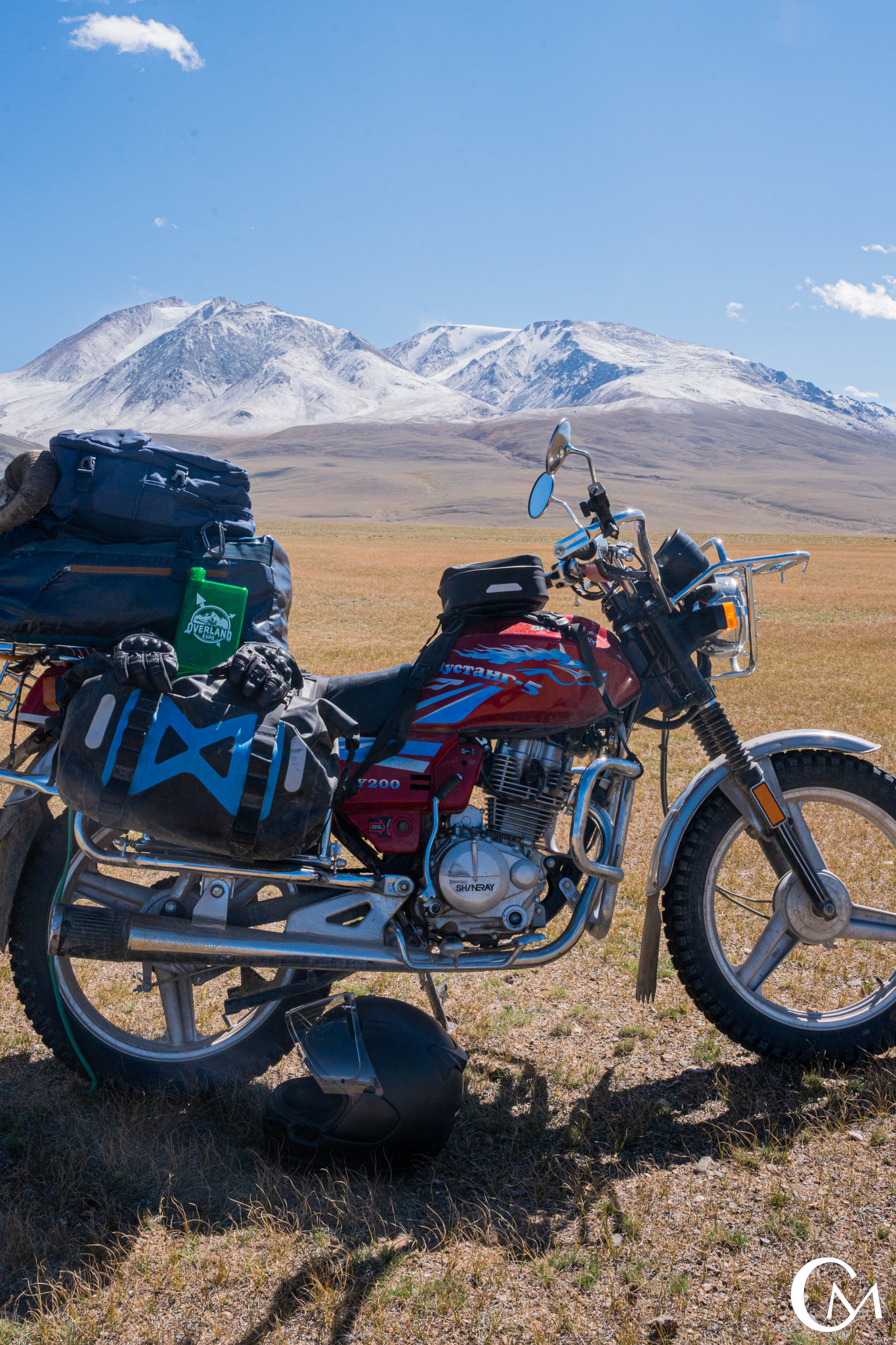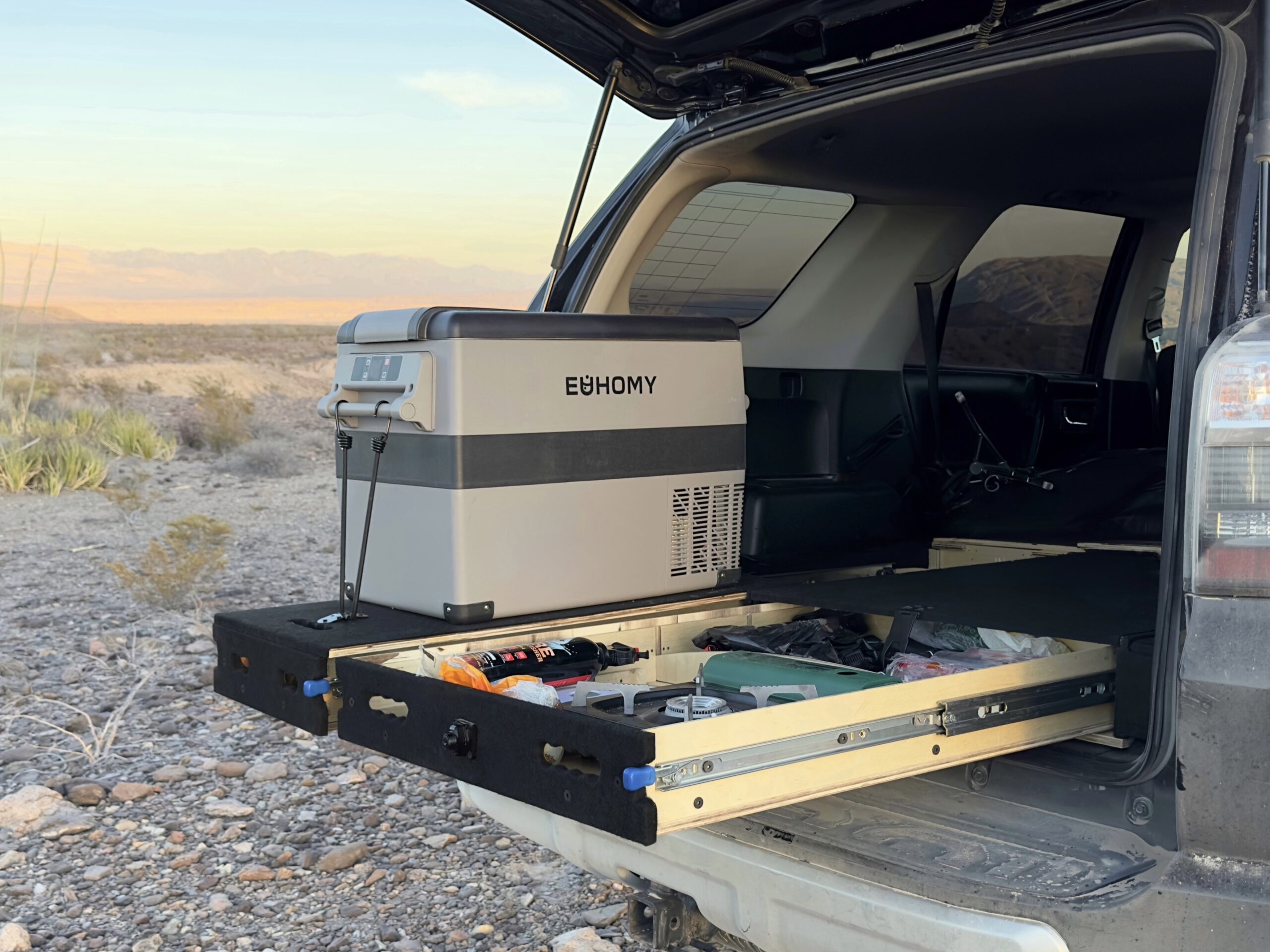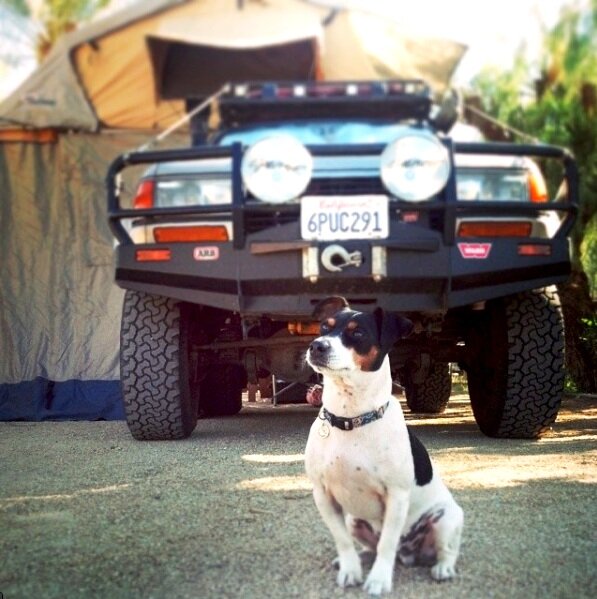
Its a dog’s life!
My wife Astrid and I travel everywhere with our 10-year-old rescue Jack Russell Terrier named Sir Digby. Over the past six and half years, Digby has traveled extensively in Western Canada, all over the U.S. – typically in the desert Southwest, and down the Baja Peninsula. We’ve learned a ton by having Digby on trips with us and I hope to share some of the things we’ve learned so you feel comfortable traveling with your dog, too.
Sure, traveling with a dog isn’t easy, but who better to share your adventures with than your four-legged friend? If you don’t currently travel with a companion animal, there are just a few things to think about before you take that first trip. If you already do, I hope to cover some things that you might not have thought about before. If you have any questions, hit me up on Instagram @overlandnomads.
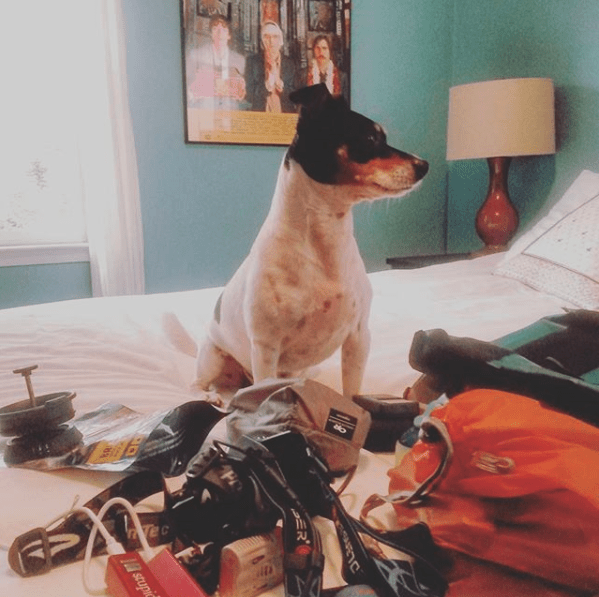
Sir Digby tolerates road trips if you bring his favorite stuff.
Essential Things to Bring
There are a few essentials to bring with you, if you take your dog into the backcountry. Download the checklist here.
-
Food and Water: Bring enough for your entire trip or plan how you will get ingredients to make your dog’s food on the road. Consider how you’ll store fresh food versus canned or bagged. Just like humans, a dog will require at least one ounce of water per pound of body weight per day. For example, a dog like Digby is 20 pounds and requires 20 ounces of water per day. Lots of factors affect how much water your dog drinks, like environmental temperature and exercise. Water is the single limiting factor to spending large amounts of time off-grid. Make sure to bring enough. Don’t forget to bring a dog bowl with you.
-
Treats and Snacks: A camping trip just isn’t the same without treats and snacks, am I right? Make sure you bring your dog’s favorites, too. Keep them in an easily accessible place so you can get your buddy some sustenance between meals.
-
Leash, Collar/Harness, or Tie Out: We often let Digby roam around off leash when we’re in camp alone. When any other humans or animals are nearby we always keep him on a lead and tie out so he doesn’t bother anyone. Digby has a pretty high prey drive and he will chase any squirrel, chipmunk, or other small animal he sees. A leash and tie out keeps him and other forest critters safe.
-
First Aid and Med Kits: Keep a kit with first aid for you and your dog. Most first-aid items can be used interchangeably. Include bandages, gauze, adhesive tape, hydrogen peroxide, cotton balls or swabs, saline solution, alcohol wipes, towels, gloves, tweezers, and antibiotic ointment. Keep a separate kit with all of your buddy’s meds too.
-
Poop Bags: There is no ‘Poop Fairy!’ Clean up your dog poop. Enough said? I can’t tell you how many times a great campsite was spoiled with dog poop left in it. If we’re practicing Tread Lightly principles, that includes keeping your campsite cleaner than you found it.
-
Toys, Bed, Blankets: Bring along things that keep your dog entertained like tennis balls and toys. Also bring things that make your dog comfortable like a bed or cot and a blanket. It gets cold in the desert!
Essential Vaccinations
To cross international borders, your pet must be healthy, look healthy, and be well groomed or it can be turned away. It is required that all pets are up-to-date with rabies shots and other vaccinations. Carry document(s) from your vet certifying general good health and bring your vaccination records. Check requirements at each border crossing before you arrive so you aren’t surprised.
There are a few Core Vaccinations and a few Non-Core Vaccinations that are nice to have to keep your pet safe. The only vaccination that we’ve ever been asked about at the border is a current rabies vaccination, but again, check requirements and be prepared. I’m not a veterinarian, so if you have specific questions about these vaccinations, make an appointment with your vet!
-
Core Vaccinations:
-
Rabies
-
CAV-2 Distemper/ Parvo/ Adenovirus
-
Leptospira
-
-
Non-Core Vaccinations:
-
Canine Influenza
-
Canine Parainfluenza and Bordetella
-
Lyme
-
A Word About Vets
You’ll definitely need to keep your pup healthy while you’re on the road. Depending on the length of your trip, you will probably need to find a vet in the area or country you’re traveling in to perform routine care & check ups, prescribe meds, and administer booster vaccines. Check forums, Yelp, and Google for vets if you’re not in a hurry.
If you are in an emergency situation, it is important to be as prepared as you can before you need a vet. Google can help you find an emergency vet if you have service. You can also ask a local (if possible). Make sure you know the word for veterinarian in the language spoken locally.
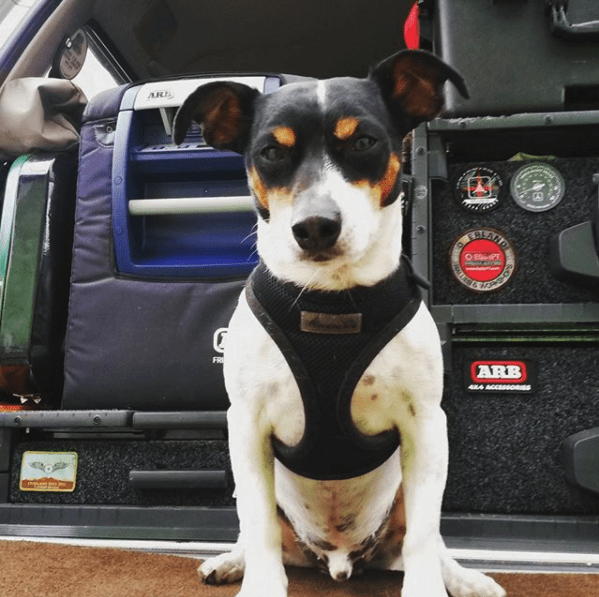
I’m going with you, right?
Taking Your Dog to See the Sights
There is a lot to consider here so your day out on the trails or at the sights is fun for the entire pack.
On the Trails: Make sure your buddy is even allowed on trails. Most State and National Parks don’t allow dogs on the trails. If dogs are allowed, please understand that you are responsible for both your actions and the actions of your dog. Be respectful that some people don’t love dogs as much as you do and keep your dog leashed or under strict voice control at all times. Common sense and courtesy go a long way! A leash also helps here to keep your four-legged friend away from natural hazards like cliffs, boulders, rivers, and wildlife.
Sightseeing: Again, ask yourself if your dog is allowed at the sights. Most monuments and ruins do not allow dogs. What is your plan if your dog isn’t allowed? You can consider boarding or pet sitting if that is an option. Maybe your partner hangs back to watch the fur kid one day and you do it the next so you can see the sights? Make sure you have everything covered to make it easy and enjoyable for you and your buddy. It should go without saying – but I’ll say it anyway – NEVER, and I mean, NEVER leave your dog inside a vehicle on a hot day. On an 80º day, it takes ten minutes for the temperature in a parked car to get to 100 degrees. That’s no way to treat your furry friend!
Where Will Your Dog Sleep?
If your dog is anything like Digby, they’ll be sleeping in your tent with you. Your dog might not be comfortable in a tent and would rather sleep in your rig or in the bed of your truck. Whatever the case, you should always test how well your dog does in a tent or in your vehicle BEFORE you go on that multi-week trip across the country or multi-year trip around the world. Try a test trip one weekend or simply set up your tent in your backyard and test it out there.
Here’s a few things to think about when it comes to sleeping arrangements.
Ground Tent: If you’re planning to use a ground tent for you and your dog, first examine your current tent and make sure it will work. Rugged materials are a must since dog claws tend to destroy even the most well-built tent. Do you have a vestibule? They are a good spot to clean your dog’s paws before heading in for sleep. Two door tents tend to be a better option as well, so you don’t have to climb over your dog to get in and out of the tent.
Rooftop Tent: If you have a rooftop tent you’ll need to consider how you’ll get your dog in and out of the tent each day. It is easy if your dog is 20 pounds, not so easy if your dog is 90 pounds. Also be aware that rooftop tents are often narrower and shorter than many ground tents. Cramming a dog into an already crowded rooftop tent won’t work for everyone and will lead to a lack of sleep for everyone.
In-Vehicle or In-Truck-Bed: Some dogs don’t like to sleep with you, so you’ll need to find a spot in your rig to set up their sleeping area. Consider heat, cold, and make sure they have enough water to last the night. Also consider forest critters and whether or not you want your dog sleeping alone in your vehicle.
Overlanding with your dog is fun! With a little prior planning, your dog can become an integral part of your adventures. By anticipating what you pup needs you’ll all have a great time out in the wilderness! Check out my presentation from Overland Expo Virtual Spring if you’d like!
